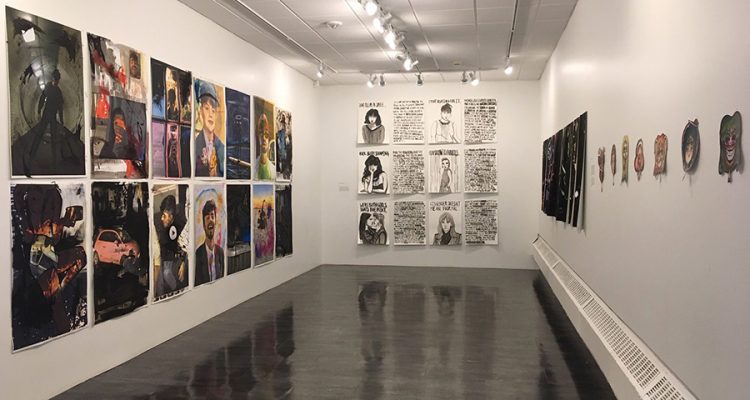The studio art program, like other parts of the Fairfield community and the world at large, has seen many changes since the beginning of the pandemic. Jo Yarrington, professor of studio art in the Department of Visual and Performing Arts and co-director of the Fredrickson Family Innovation Lab, was happy to talk with The Mirror and give some more insight into how her classes and the studio art program as a whole have adjusted due to the coronavirus.
According to Yarrington, the studio art department is “following the recommended guidelines set up by the University and also the state of Connecticut” in order to help prevent the spread of the coronavirus. These guidelines include things such as making sure that work stations are at least six feet away from one another and having sanitizer for students to use as well as cleaning supplies available to clean the workstations and tools.
Many professors have structured their classes into a hybrid model. Yarrington herself is teaching two classes, both of which are hybrid, with two to three completely remote learners in each. Most of these remote learners had chosen to be remote from the beginning, but “there was also someone who had to go remote because of contact tracing,” Yarrington says.
Her hybrid classes are mostly remote, only meeting in-person three times throughout the semester. When meeting in person, her class sizes are small enough to allow all the students to be in the same room. This is unlike most professors, who have to split up the class into two rooms or have different sections of the class take turns coming to class in-person.
In-person classes can require some problem solving to make sure the remote learners are included. During one class, Yarrington recalls asking two students to Facetime the two remote learners, which was “not ideal” as she said, but was “the only way [she] could think of how to relay information in real-time to [remote] students.”
Yarrington stated that there has been “a complete change in how [she] might have taught in the past.” Prior to the coronavirus outbreak, her classes were much less digital, with people displaying their work in the classroom or hallway and reviews of completed art pieces taking place in-person.
Now, many reviews are done on platforms such as Quip, with discussion threads about assignments. Here, students “are posting JPGs of their assignments and responding to other people in the class.” Google Docs is also used in her classes, where students upload JPGs of their work with summaries of their pieces. Yarrington also has private grade sheets that only her and her students can see. She mostly utilizes Blackboard to post assignments, and “each week has a course module,” which include assignments, handouts and criteria for projects.
Although the new teaching methods have taken some getting used to, there have been some benefits. For example, Yarrington believes that expanding her use of Blackboard “provides more clarity” for students, which is evidenced by students coming to her with fewer questions about assignments since she has begun “using Blackboard a lot more than [she] would have in the past.”
Posting their work online also allows students to automatically create a portfolio of their artwork, “which is especially nice for majors and minors” she says. She also thinks online discussion threads can increase peer-to-peer interaction because prior to having students post in online discussions, she would be the one doing most of the commenting on her students’ work, but now her students can give each other more feedback on their work.
Zoom can also make it easier to “demonstrate delicate handiwork,” because she doesn’t have everyone huddling around a table to watch her demonstrate a technique that can be difficult to see from far away. Zoom also makes it easier to connect with artists willing to speak to students, who in the past would usually have to drive to the school to speak to students about their art.
There are some drawbacks to the new mostly-online learning environment as well. Some classes are much more difficult to teach online, such as printmaking, which is “the only thing [Yarrington] would probably not do online.” She thinks it “might be too much to ask of beginner students” to learn all the different techniques at home and purchase all the different materials such as inks and rollers needed for the course.
I myself was a student in Yarrington’s printmaking class last semester when everything abruptly switched to online instruction. It was a huge adjustment from being able to go to a printmaking studio to use a printing press to then being required to come up with my own homemade printmaking methods.
The coronavirus pandemic has created a situation we have never experienced before, where educators and students have had to come together to adjust to teaching and learning in completely new ways.
This can be especially difficult in a field like studio art, where you have to learn how to create physical things as opposed to other fields where everything you do can be contained to your computer. However, through these difficulties, benefits have been witnessed while increasing the amount of schooling that is done online, which will likely impact the way schooling is done in the future, even after the pandemic is over.


Leave a Reply